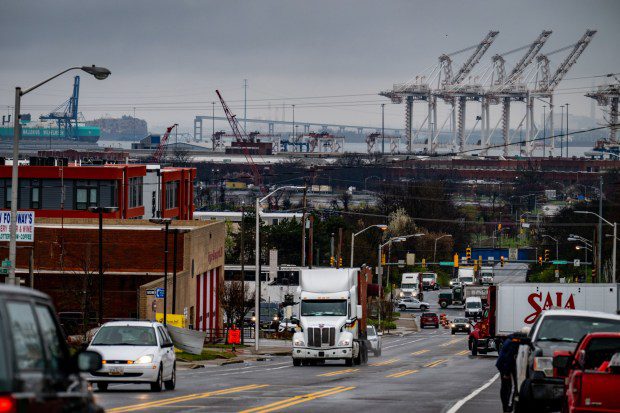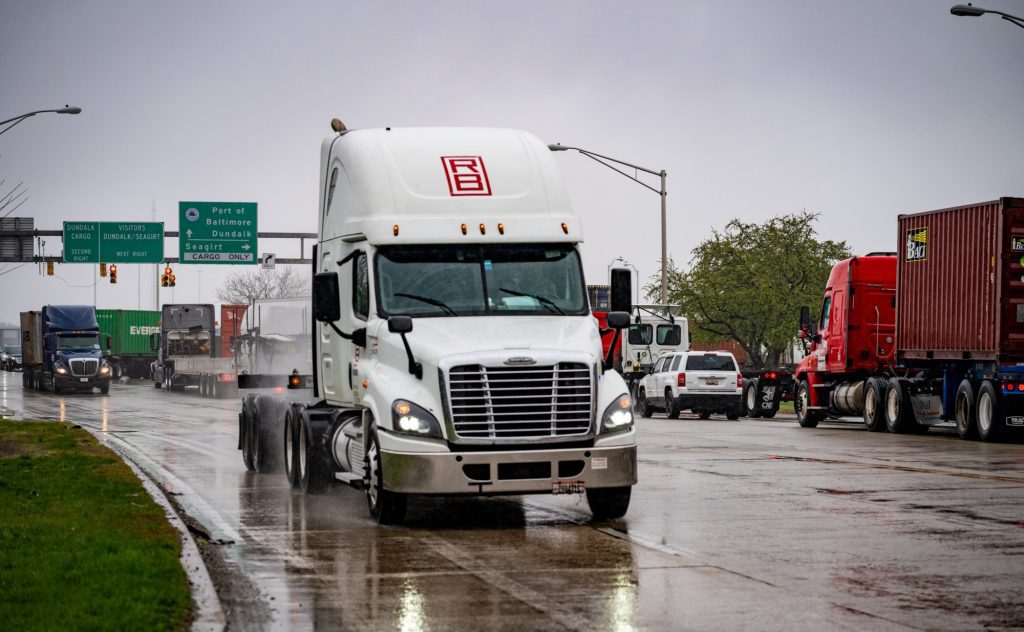Soon after the container ship Dali struck and toppled the Francis Scott Key Bridge early Tuesday, Paul Brashier was among many in the shipping industry who shifted into overdrive.
Brashier, who was in Texas at the time, immediately focused on the cargo – such as tires, dog food, home goods, and cookware – packed into containers on ships destined for the Port of Baltimore and managed by his logistics company. He woke up some clients at 3 a.m. and put backup plans in place upon hearing about the fatal collision.
Paul Brashier, a vice president at ITS Logistics based in Reno, Nevada, stated, “Our biggest worry was the bridge cutting off the harbor for containerized cargo. We started looking at other ports and working with clients to reroute the freight after the bridge incident.
Brashier acknowledged that this was just the beginning of the process and his company would be dealing with it for the next five to seven days. His firm transports freight from ocean ports to distribution centers or stores in 56 markets, including Baltimore. They also handle domestic trucking and deliver cargo to ports for export.
The collapse of the bridge, which is the only route in and out of the port, and the suspension of vessel traffic have disrupted or permanently changed operations for many businesses and workers involved in moving goods and vehicles through the port. Companies like ITS are rushing to redirect cargo to other places, such as Norfolk, Virginia; Savannah, Georgia; Charleston, South Carolina; New York and New Jersey. Authorities continuedcollecting evidence and searching
for six missing construction workers in the Patapsco River on Wednesday, while experts estimated that rebuilding the bridge could take as little as two years or as many as 15 . The National Transportation Safety Board reported that it is analyzing the ship’s onboard dataBrashier, whose clients are retailers, manufacturers and the auto industry, said Wednesday the company has leaned heavily on its “visibility” technology, which allows clients to see almost in real time the location of their freight before it arrives in the U.S. “It’s a great big focus right now as we’re waiting to see where all these containers that were going to go to Baltimore end up getting discharged on the East Coast,” he said..
By later Tuesday, the company had begun planning for its next phase of operations — the ability to reach normal container flow in the next two weeks — at ports that are new to clients. By early next week, the company expects to start longer-term planning, making decisions such as potentially moving some business to the West Coast.
Brashier said his company has infrastructure to handle customers whose freight is rerouted. But it may be more difficult for the shippers.
“If you’re used to bringing in all your freight into Baltimore and that goes to a local facility, now you’ve got freight that’s going to be hundreds or thousands of miles away from that original entry point, which means you’re going to have additional transportation costs,” he said.
Shippers might also have to pay fees for not removing containers quickly enough from a port. They could also have to pay more for trucking to transport goods to end users.
“There will be inflationary pressure for the end user, the consumer, just as we saw after Covid, probably not as severe, but there will be extra transportation costs,” Brashier said. “We're trying to protect our clients from extra charges as much as we can and be responsible. We hope that other parties, such as ocean carriers and terminals, will do the same.”
On Mar 27, 2024, there are idle cranes at the Port of Baltimore and a collapsed bridge seen in the distance as trucks pass through the intersection of Broeining Highway and Holabird Avenue. (Jerry Jackson/Staff)
Many in the industry believe that Baltimore’s port, a major hub for importing and exporting cars, light trucks and bulk goods, is likely to be shut down for at least three months. If supply chains start to bypass Baltimore, the effects could last much longer, according to experts.

“We're already making alternative plans to collect those containers and arrange for truck or rail transportation from the new ports,” C. Matt Castle, vice president of global forwarding, said in an email. “For shipments that haven’t departed yet, we’re helping customers retrieve those containers from the Port of Baltimore and get them on their way.”
However, with the Key Bridge gone, trucks will face delays, especially those traveling from the south and using I-95 or I-895 tunnels or navigating around the harbor, a detour that could add an hour to trips, he said.
“The good news for customers with containers that had already arrived at the port is that we can get drivers in to access their freight,” Castle said. And, though rail service to the port from places such as Chicago has been suspended, it’s likely to start up again this week, enabling cargo loaded onto trains to move inland.
Tinglong Dai, a professor at Johns Hopkins Carey Business School in the area of Operations Management and Business Analytics, said during a Wednesday panel at Hopkins that the shutdown will hurt Baltimore in the short run but is not expected to have a big impact on the global supply chain, which has become flexible and resilient.
The impact will vary even at the port, he said. Although the port plays a major role in automobile imports and exports, not all automakers at the port are affected. BMW and Volkswagen each have terminals outside the area of the bridge collapse. But companies such as General Motors or Ford are affected.
“The impact is relatively local. It’s definitely not a national supply-chain crisis and won’t trigger a global supply-chain crisis. I don’t want to downplay the impact, but resilience has been built into global supply chains,” Tinglong Dai said.
Natalie M. Scala, an associate professor at Towson University who directs the graduate program in supply chain management, expressed concerns about ships stuck at the port with no way to distribute products.
“The immediate impacts, in terms of a supply chain component: it’s crucial that the port is clear and open,” Scala mentioned. “The bridge is obviously important. But the economic effect in Baltimore, this region, and the eastern seaboard is the actual movement of products to and from the port itself.”
Baltimore Sun reporters Maya Lora and Jonathan M. Pitts contributed to this article.
The remains of the Francis Scott Bridge are blocking the only way in and out of the Port of Baltimore, causing disruption or permanent changes to shipping operations for many businesses and workers.
Baltimore Sun reporters Maya Lora and Jonathan M. PItts contributed to this article.









